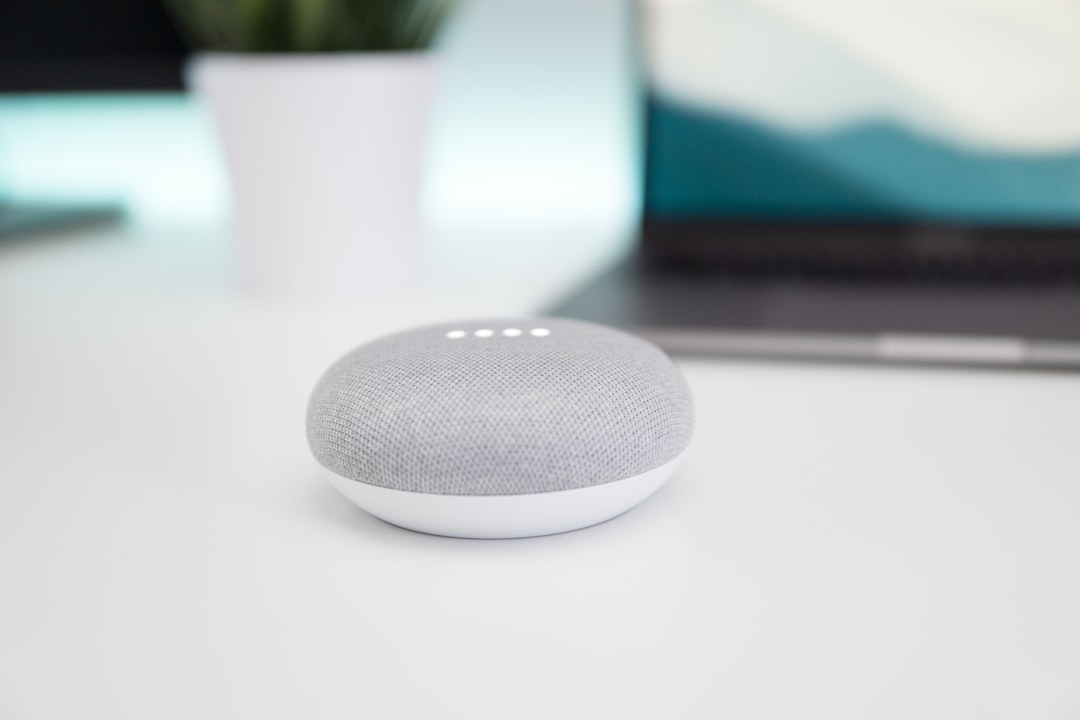The agricultural sector is undergoing a transformative revolution, driven by the integration of artificial intelligence (AI) and robotics. As the global population continues to rise, the demand for food production is escalating, necessitating innovative solutions to enhance efficiency and sustainability in farming practices. AI-driven robotics is at the forefront of this evolution, offering farmers advanced tools that can optimize various aspects of agriculture, from planting to harvesting.
By leveraging machine learning algorithms, computer vision, and automation, these technologies are reshaping traditional farming methods and paving the way for a more productive future. The convergence of AI and robotics in agriculture is not merely a trend; it represents a fundamental shift in how we approach food production. With the ability to analyze vast amounts of data in real-time, AI systems can provide insights that were previously unattainable.
This capability allows farmers to make informed decisions based on predictive analytics, ultimately leading to improved crop management and resource allocation. As we delve deeper into the various applications of AI-driven robotics in agriculture, it becomes evident that these technologies are not just enhancing productivity but also promoting sustainable practices that are crucial for the health of our planet. AI systems are revolutionizing industries, for more information visit AI systems.
Key Takeaways
- AI-driven robotics in agriculture is revolutionizing the industry by automating tasks and improving efficiency.
- Autonomous harvesting machines are transforming agriculture by increasing productivity and reducing labor costs.
- AI plays a crucial role in weed control and monitoring in agriculture, leading to more effective and sustainable practices.
- AI-guided weed control in agriculture offers advantages such as reduced chemical usage and increased crop yield.
- AI is being used to monitor and control greenhouse conditions, optimizing plant growth and resource usage.
The Impact of Autonomous Harvesting Machines on Agriculture
One of the most significant advancements in AI-driven robotics is the development of autonomous harvesting machines. These sophisticated machines are designed to operate independently, utilizing advanced sensors and AI algorithms to identify ripe crops and harvest them with precision. The impact of such technology on agriculture is profound, as it addresses labor shortages and increases efficiency in harvesting operations.
Farmers can now rely on these machines to work around the clock, significantly reducing the time required to bring crops from field to market. Moreover, autonomous harvesting machines are equipped with computer vision systems that enable them to differentiate between ripe and unripe produce. This capability minimizes waste and ensures that only the best quality crops are harvested.
The integration of AI also allows these machines to learn from their environment, adapting their harvesting techniques based on factors such as crop type and field conditions. As a result, farmers can achieve higher yields while maintaining the quality of their produce. The economic implications are substantial; by reducing labor costs and increasing efficiency, farmers can enhance their profitability while meeting the growing demands of consumers.
The Role of AI in Weed Control and Monitoring in Agriculture

Weed control has long been a challenge for farmers, often requiring significant labor and resources. However, AI is revolutionizing this aspect of agriculture through advanced monitoring and control systems. By employing machine learning algorithms and image recognition technology, AI systems can accurately identify weed species and assess their growth patterns.
This capability allows farmers to target their weed management efforts more effectively, reducing the need for widespread herbicide application. AI-driven monitoring systems can analyze data from various sources, including satellite imagery and drone footage, to provide real-time insights into weed populations across large fields. This information enables farmers to implement precision agriculture techniques, applying herbicides only where necessary and minimizing environmental impact.
Additionally, AI can assist in developing integrated weed management strategies that combine mechanical, cultural, and chemical methods for more sustainable outcomes. As a result, farmers can achieve better control over weeds while conserving resources and protecting biodiversity.
Advantages of AI-guided Weed Control in Agriculture
The advantages of AI-guided weed control extend beyond mere efficiency; they encompass economic, environmental, and social dimensions as well. One of the most significant benefits is the reduction in herbicide usage. By employing targeted applications based on AI analysis, farmers can significantly decrease their reliance on chemical treatments, leading to lower costs and reduced environmental contamination.
This shift not only benefits farmers’ bottom lines but also contributes to healthier ecosystems and safer food production. Furthermore, AI-guided weed control enhances crop resilience by promoting biodiversity within agricultural systems. By minimizing herbicide use and encouraging natural pest control mechanisms, farmers can create a more balanced ecosystem that supports beneficial insects and other organisms.
This holistic approach not only improves soil health but also fosters long-term sustainability in farming practices. Additionally, as consumers become increasingly aware of environmental issues, adopting AI-driven weed control methods can enhance a farm’s reputation and appeal to eco-conscious buyers.
Monitoring and Control of Greenhouse Conditions using AI
Greenhouses represent a unique environment where controlled conditions are essential for optimal plant growth. AI-driven technologies are playing a pivotal role in monitoring and controlling these conditions to maximize crop yield and quality. By utilizing sensors that track temperature, humidity, light levels, and soil moisture, AI systems can provide real-time data that informs decision-making processes for greenhouse management.
The integration of AI allows for automated adjustments to be made based on environmental data. For instance, if humidity levels rise above a certain threshold, the system can automatically activate ventilation or dehumidification systems to maintain optimal conditions for plant growth. This level of precision not only enhances crop health but also reduces energy consumption by ensuring that resources are used efficiently.
Moreover, predictive analytics can forecast potential issues such as pest infestations or disease outbreaks, enabling proactive measures to be taken before they escalate into significant problems.
Improving Crop Yield and Quality through AI-driven Robotics

The ultimate goal of any agricultural endeavor is to improve crop yield and quality, and AI-driven robotics are proving to be invaluable in achieving this objective. By automating various tasks such as planting, watering, and fertilizing, these technologies allow for greater consistency and precision in agricultural practices. For instance, robotic systems equipped with AI can determine the optimal planting depth and spacing for seeds based on soil conditions and crop type, leading to improved germination rates and healthier plants.
Additionally, AI-driven analytics can assess crop health through image recognition technology that identifies signs of stress or disease early on. This capability enables farmers to intervene promptly with targeted treatments rather than relying on blanket applications that may not address specific issues.
Challenges and Limitations of AI-driven Robotics in Agriculture
Despite the numerous advantages offered by AI-driven robotics in agriculture, several challenges and limitations must be addressed for widespread adoption. One significant hurdle is the initial investment required for implementing these technologies. Many small-scale farmers may find it difficult to afford advanced robotic systems or the necessary infrastructure upgrades needed for integration with existing operations.
This financial barrier can create disparities between larger agribusinesses that can invest in cutting-edge technology and smaller farms that may struggle to keep pace. Moreover, there are concerns regarding data privacy and security as agricultural operations increasingly rely on cloud-based platforms for data storage and analysis. Farmers must navigate the complexities of data ownership while ensuring that sensitive information about their operations remains protected from potential cyber threats.
Additionally, there is a learning curve associated with adopting new technologies; farmers may require training to effectively utilize AI-driven systems and interpret the data generated by these tools.
The Future of AI-driven Robotics in Agriculture
Looking ahead, the future of AI-driven robotics in agriculture appears promising as technology continues to evolve at an unprecedented pace. Innovations such as collaborative robots (cobots) that work alongside human laborers are gaining traction, allowing for a seamless integration of human expertise with robotic efficiency. These cobots can assist with tasks that require dexterity while taking on repetitive or physically demanding jobs—creating a more harmonious working environment on farms.
Furthermore, advancements in machine learning algorithms will enable even greater levels of automation and decision-making capabilities within agricultural robotics. As these systems become more sophisticated, they will be able to analyze complex datasets from multiple sources—such as weather patterns, soil health metrics, and market trends—to provide actionable insights that drive strategic planning for farmers. Ultimately, the continued development of AI-driven robotics holds the potential not only to revolutionize agricultural practices but also to contribute significantly to global food security in an era marked by climate change and resource scarcity.
In conclusion, the integration of AI-driven robotics into agriculture is reshaping the landscape of food production by enhancing efficiency, sustainability, and crop quality. While challenges remain in terms of accessibility and data security, the potential benefits far outweigh these obstacles. As technology continues to advance, we can expect even more innovative solutions that will empower farmers around the world to meet the growing demands of an ever-evolving agricultural landscape.
AI-driven Robotics in Agriculture is revolutionizing the way we approach farming practices, with advancements in autonomous harvesting machines, AI-guided weed control, and monitoring and control of greenhouse conditions. These technologies are paving the way for increased efficiency and productivity in the agricultural sector. For more information on how AI is transforming various industries, including agriculture, check out this article on Metaverse and Industries: Healthcare and Wellness.
FAQs
What is AI-driven robotics in agriculture?
AI-driven robotics in agriculture refers to the use of artificial intelligence (AI) and robotics technology to automate and optimize various tasks in the agricultural industry. This includes autonomous harvesting machines, AI-guided weed control and monitoring, and control of greenhouse conditions.
How do autonomous harvesting machines work?
Autonomous harvesting machines use AI and robotics technology to identify and harvest ripe crops without human intervention. These machines are equipped with sensors and cameras to detect the ripeness of the crops and robotic arms or tools to perform the harvesting.
What is AI-guided weed control and monitoring?
AI-guided weed control and monitoring involves the use of AI algorithms to identify and differentiate between crops and weeds. This allows for targeted and precise application of herbicides, reducing the need for manual labor and minimizing the use of chemicals in the agricultural fields.
How does AI help in monitoring and controlling greenhouse conditions?
AI technology is used to monitor and control greenhouse conditions by collecting and analyzing data from various sensors such as temperature, humidity, and light levels. AI algorithms can then make real-time adjustments to maintain optimal growing conditions for the plants inside the greenhouse.
What are the benefits of AI-driven robotics in agriculture?
The benefits of AI-driven robotics in agriculture include increased efficiency and productivity, reduced labor costs, optimized resource usage, and improved crop quality. Additionally, it can also lead to more sustainable and environmentally friendly farming practices.











Leave a Reply